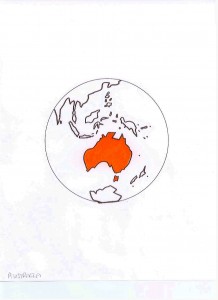AUSTRALIA
A. THE COUNTRY
Australia, both country and continent, is in the southern hemisphere. Since 1901, when six colonies of Dutch and English settlers became the Commonwealth of Australia, it has been a democracy. Its population is around 22 million. The majority of the people have British and Irish roots. Migrants from other countries, together with aboriginal people, represents 32% of Australians. There is a high standard of living in a liberal economy but poverty has been increasing, especially since 2000. The ecology is fragile with droughts, bush fires and floods.
B. CHRISTIANITY AND RELIGIONS
More are claiming no religion, and the arrival of many non-Christian immigrants make Australia an increasingly pluralistic society. The majority of the population claims to be Christian, followed in number by the non-religious. Buddhist and Muslim are similar in numbers while six notable other religions are much less in number.Evangelicals are a dynamic and diverse entity. The greatest growth is among Pentecostals/charismatic groups – put together, they would constitute Australia’s third-largest denomination.
C. HISTORY OF PENTACOSTALISM
In the early 1900’s there were two Pentecostal churches that flourished. They joined to form the “Assemblies of God of Australia”. The first church, the Pentecostal Church of Australia, was started by Charles Greenwood, and five years later, arrived an evangelist to help with leadership, A. C. Valdez Sr., who was involved in the Azusa Street Revival (Los Angeles, U.S.A.). The second church, The Assemblies of God in Queensland, was started by Will and Charles Enticknap. Other strong leaders were soon raised up, like Philip Duncan. In more recent years, Pentecostal Australians have seen victory in their faith experience.
Donna Siemens
References:
http://en.wikipedia.org
David Cartledge, The Apostolic Revolution. Chester Hill: Paraclete Institute, 2000.
Operation World, Jason Mandryk. Colorado Springs: Biblica Publishing, 2010.

